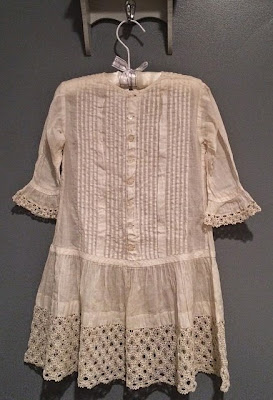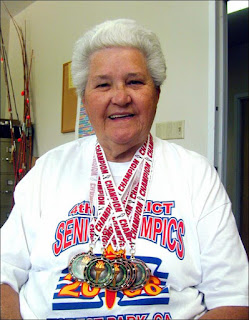| The house I grew up in on Macon Drive in Atlanta. |
When I saw the theme for this week was “the old homestead,” I immediately thought about my third great-grandmother Caroline (Hobbs) Lankford, who filed for and received a plot of land in Penfield, Greene County, Georgia under the Homestead Act in 1869. But I blogged about this in 2014 so didn’t want to repeat myself. You can read about Caroline here. I next thought about Grandpa and Grandma Lankford’s old home place in Penfield, but I shared the few memories I have of their home in a blog post about my Grandpa Carroll Harvey Lankford in 2016. You can read about Grandpa here. I went into more detail about their home when I blogged about our Lankford family reunions in 2015. You can read about them here. So, what homestead should I write about? I guess it’ll be the Atlanta home I grew up in.
| Front sidewalk during heavy rainfall. The roses were white. I remember people stopping and asking if they could have a white rose to wear on Mother's Day. |
Shortly after I was born, my family moved from the West End neighborhood of Atlanta to a nice neighborhood on Macon Drive in southeast Atlanta. The house was your standard house, nothing fancy. The main level included a living room, dining room, small kitchen, two bedrooms, and a bathroom. The bottom level of the house was divided into two sections. One section had two bedrooms (one large and one small) and a laundry room; the other section was dirt and was where we stored tools, canned goods, and the normal junk people keep in their basements. When we first moved there, it was Daddy, Mama, and three children. But our family was still growing and within four years there were five children. At some point, my uncle Clark Lankford moved in with us so there were eight people living in the house and all with one bathroom! By the way, my Uncle Clark was like a father to us, even after he moved out of the house. I loved him dearly.
| Furniture in the living room. I have the carnival glass vase on the left today. It once belonged to my Grandma Lankford. One of my sisters has the statues in front |
| Front porch, after the remodel. My brother Michael holding the cat that was probably named Kitty Wampus. |
| View of the back screened-in porch |
I don’t know what the yard acreage was, but it always seemed large to me. There was a gravel driveway with space for several cars. Daddy built a patio near the back of the house that included a brick bar-b-que pit. I remember eating some finger lickin’ good ribs cooked on that pit. During the summer months, Mama often brought out the hand crank ice cream maker for some vanilla, strawberry, or peach ice cream. Daddy had a green thumb so we always had lots of color in the yard. And it wasn’t just flowers and bushes, we had fruit trees as well—cherry, pear, plum, apple, and even a banana tree. During the winter months, Daddy dug his banana tree up as well as a Bird of Paradise plant and transplanted both in the dirt side of the basement, in front of a window. Come spring, he’d move them back outside. One side of the house had a layered rock garden, anchored by a large rock against the side of the house. Every spring it had Thrift flowing over the rocks and in the summer, it was always filled with Day Lilies and Iris. That side of the house was lined with Baby’s Breath. At some point, Daddy started a vegetable garden in the backyard. It got bigger every year. Between his garden and the large farmers market in Forest Park, we had fresh vegetables and fruit on the table year-round.
| Brother Michael on the big rock in the rock garden. |
| Brother Michael in the rock garden. The Hamby's home in the background. Their son Douglas was killed in a car accident while on military leave during the Vietnam War. Mama's car in the background. |
| Hunting Easter eggs around the pear tree -- brother Michael, uncle Clark, and sisters Vanessa and Bonita. |
But our house wasn’t the only part of the homestead. It also included the outbuildings, in this case, our neighbors.
The house next door belonged to Mrs. Davis. She and her two adult children, Baxter and Elaine, lived on one side of the house. The other side of the house was Davis Grocery, a neighborhood mom and pop store. Her store was always stocked with milk, bread, canned goods, snacks, candy, ice cream, and the Coke cooler. On the nights Mama worked late, the store was already closed by the time she got home so Mrs. Davis would have us come to her back porch and to buy an evening Coke. It didn’t dawn on me until years later that drinking a Coke that late at night was probably why I had trouble falling asleep. I bought a lot of penny candy at Davis Grocery. In March, she always had kites for the neighborhood kids. I remember buying them and flying them from the hill on the side of her house. The corner where her house stood is empty today.
| My brother Michael, sisters Vanessa and Jennifer, and me. You can see Mrs. Davis' house in the background. |
| Neighbor Elaine Davis and sister Vanessa. Elaine went to Panama City, Florida with us one time. |
A good part of the neighborhood was made up of the Morgan and Newcomer families. Hazel Morgan lived next door to us. Her brother Charles Morgan and his wife Thelma lived next door to Hazel. Alice and Buddy Newcomer lived next door to Alice’s, parents, Charles and Thelma. Across the street were other members of the Morgan family—Raymond, Charles, Wayne, and Gene—all children of Charles and Thelma. They were a huge part of our lives.
We also hung out with the Strickland, Rath, and Kingston families who all had children the same ages as the five of us. All three families were a huge part of our lives.
| Celebrating someone's birthday with the neighborhood kids in our living room. The house had a fireplace at one point. I only remember the mantel being there. |
Bromack Drive was across the street, ending at Macon Drive. If you kept going, you’d go down our driveway. The road had a slight incline and I remember sitting at the living room window during ice storms, watching cars trying to make their way to the top of the incline. I still think about that today when I watch cars try to get up the small hill across from my house during snow storms.
| Bromack Drive meets Macon Drive. My brother Michael and I. You can see three of the Morgan houses in the background. |
The Lakewood Fairgrounds were just over a mile from our house. Every fall, the Southeastern Fair came to town for at least a week, maybe two. The entire neighborhood gathered on Meadow Park Drive (the street that ran beside the Davis house and where the Strickland, Rath, and Kington families lived) to watch the fireworks show put on at the fairgrounds. We could see them above the trees from the side of Mrs. Davis’ backyard. That was always a fun time of the year. If you saw the Smokey and the Bandit movie, you would have seen the fairgrounds in the opening and closing scenes. In the second Smokey and the Bandit movie they blew up the old wooden roller coaster.
Our home in Atlanta was a great house and a great neighborhood and I have very fond memories of that time of my life. My husband and I have lived in our house (our starter house) for 37 years. I hope my sons feel the same way about our house years from now.
Photo of Southeastern Fair, Nan Peeples saved to MY HOMETOWN, Old Lakewood Fairgrounds.
















